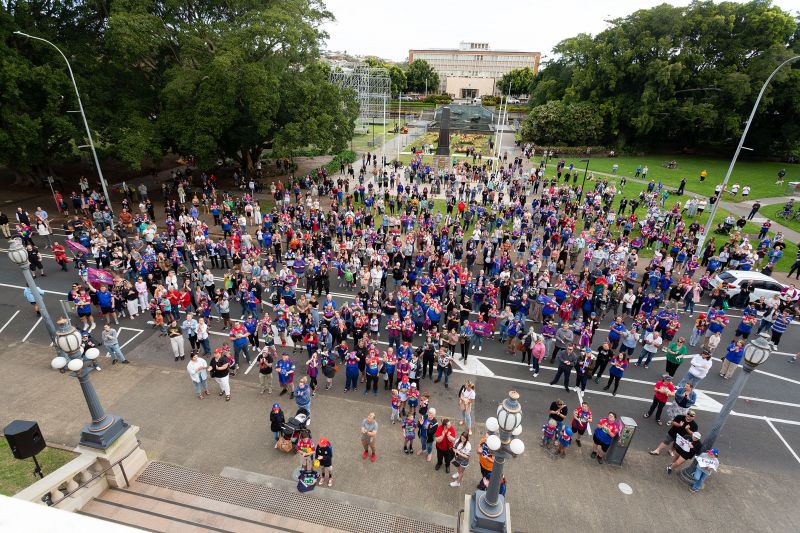With hot weather predicted across NSW for the week ahead, fire agencies have signalled the start of the fire danger period across most of the state with a call to households to prepare.
Today marks the official start of the 2023-24 bushfire season in areas including Greater Sydney, the Central Coast, the Illawarra and the Central West. This follows weeks of unseasonably warm weather that has kept NSW Rural Fire Service (RFS) firefighters on high alert.
The RFS has responded to more than 2,000 bush and grass fires across NSW in September alone, as firefighters prepare for what is predicted to be a warm and windy summer.
Due to the conditions today nine total fire bans are in force across NSW with further bans likely this week.
The statutory Bush Fire Danger Period (BDFP) begins for most local government areas (LGAs) today. Thirty-eight LGAs have already been in this danger period for at least a month, including 11 that entered it earlier than usual due to warm and dry conditions.
Firefighting personnel and volunteers across the state continue to train for fire and emergency response, but communities are reminded that they have a role to play in bushfire preparedness as well.
Residents are urged to undertake simple measures such as downloading the Hazards Near Me NSW app, checking the RFS websitelaunch, having a plan in place if a fire approaches (even if it is knowing whether to stay or leave early), and carrying out the following around your home:
- Trim overhanging trees and shrubs.
- Mow grass and remove the cuttings. Have a cleared area around your home.
- Remove material that can burn around your home, such as door mats, wood piles and mulch.
- Clear and remove all the debris and leaves from the gutters surrounding your home.
- Prepare a sturdy hose or hoses that will reach all around your home.
As a result of the prolonged wet weather across NSW, around 25 per cent of planned hazard reduction work was completed up to July this year. While more work is needed, the RFS and other agencies have made progress in hazard reduction treating more than 40,000 hectares since the beginning of July.
The onset of hot, windy and dry conditions is expected to affect further hazard reduction as the window to undertake burns begins to close.
To assist in preparation the NSW Government has invested $9 million in a Chinook helicopter, the first of its kind to be permanently based in Australia. With the capacity to carry up to 10,000 litres of water or retardant this summer, the Chinook will increase the RFS’s aerial firefighting capabilities and will lessen our reliance on aircraft borrowed from overseas.
The statutory BFDP commences on 1 October 2023 and runs through to 31 March 2024. Nine LGAs will commence BFDP on 1 November and these include Albury, Berrigan, Coolamon, Greater Hume, Junee, Lockhart, Wagga Wagga and Snowy Valleys.
Bush Fire Survival Planslaunch and information on preparing your property and family are available on the RFS websitelaunch.
Minister for Emergency Services Jihad Dib said:
“The NSW Government is committed to ensuring our firefighters are prepared and well-resourced for the fire season ahead. I want to thank the community for their understanding as RFS crews have conducted vital hazard reduction work in recent weeks. They have been able to treat some areas that have not seen hazard reduction in years.”
“We are taking the threat of this fire season seriously. We have undertaken vital hazard reduction burns before the bushfire season commences and we have added the Chinook helicopter to our already impressive aerial firefighting fleet.”
“The RFS and other agencies are doing all they can to prepare, but it is incumbent on communities to do their bit as well. Everyone should take steps to understand the fire risk in their area and make sure they have a fire plan in place, even if it is just knowing whether to stay or leave early.”
“I thank all our RFS volunteers and emergency service personnel for the work they do in protecting communities across the state and thank residents and landowners for the efforts they will put in to preparing themselves, their families and property.”
Commissioner of the RFS Rob Rogers said:
“The fire activity over recent weeks is likely to be a prelude of what we can expect to see this fire season. After years of wet weather and floods, we need the community to focus again on the risk of bushfires.”
“Our firefighters are out on the ground doing everything they can to mitigate the risk of fire but preparation is a shared responsibility and we need property owners to do their part, too.”
“There can never be a fire truck outside every home, so people need to have a plan in place if threatened by fire. Make sure your whole family knows whether you will stay and defend your home or will leave early – and if so, where you will go.”
Fire and Rescue NSW Deputy Commissioner – Strategic Capability, Megan Stiffler said:
“Especially over the holiday period, if you’re planning to travel be aware of the risk of fast-moving grass fires. Before you leave, check the weather forecast and fire danger ratings for that area and have a plan to leave should a grass or bushfire take hold.”
“If you’re camping you should only light fires in designated fireplaces or cleared land and not leave these fires unattended. If a Total Fire Ban is declared you must completely extinguish your fire before the ban comes into force. Also remember to completely extinguish all fires before you leave an area or go to sleep.”

